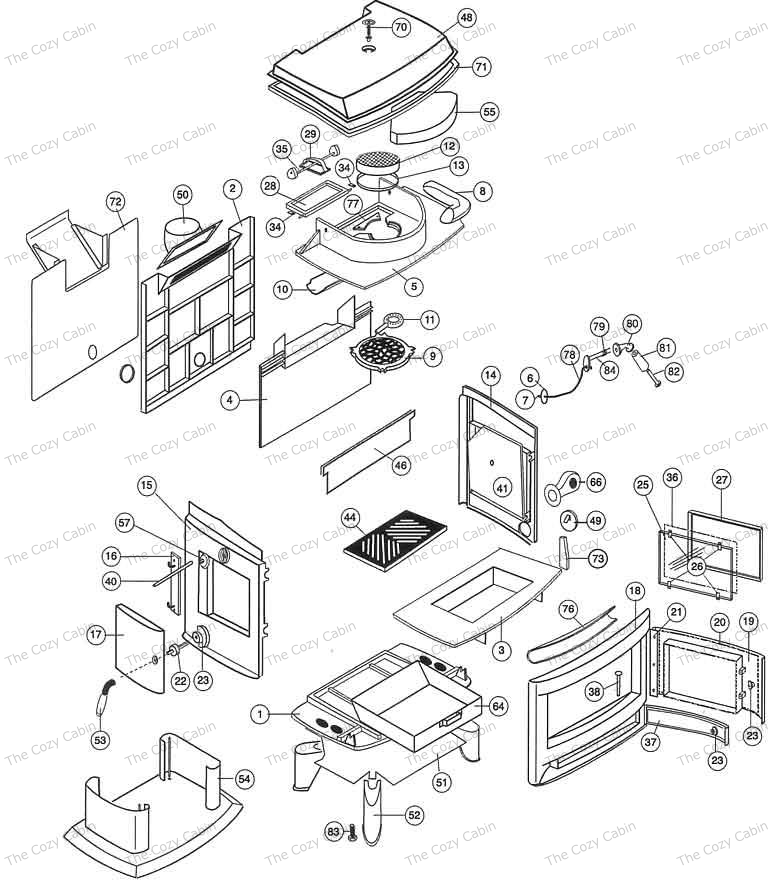Do you have a cat thermometer? If not, get one. Many of us have the auber at, which is a huge help. I had a similar problem with wet wood a few years ago, and finally started mixing in lumber scraps. Now that my wood is really dry, i don't get black glass at all. These stoves are very sensitive to wet wood, so even if you think it is dry, it probably isn't.It's a Vermont Castings Defiant...it has a cat and secondary chamber.
Thanks for the tips. To answer some questions/comments.
Getting 2 year old wood near me is a near impossibility unless I cut it myself. Problem is, I only started cutting a year ago, so I can't make the time go any faster. Most dealers' wood is even less seasoned as mine....I know they cut and split it as recently as the summer. And yes, getting a hot, hot fire does reduce some of the black on the glass, but once I close the damper to let the EPA cat do its thing, it comes back. I do not get much hissing or water coming out of the logs...I've watched for that and mostly see none. I had some in September do that, but haven't seen it since. I tend to burn ash, maple, and hickory. I've been letting the oak sit as long as possible. The logs I'm splitting are from fallen, dead trees, or trees that were felled for a building site 18 months ago.
I have a bunch of stacks going so by next season, I should have wood that is seasoned 12-18 months and longer as time goes on. My stacks are spaced and in the sun/wind on pallets, under a lean-to.
I tend to burn a hot fire (650-700 degrees per the stovetop thermometer) and really get it going. I start small, add logs, and once they get to 550 or so, i tend to load the box up with wood. I give it another 15 minutes and make sure it's burning nicely from the bottom up, and once it's at 650-700 i close the damper and let it run overnight. During the day, I tend to it more so the temperature doesn't really drop much below 550 with the damper closed. If it does, I open it back up, let it get hot, add wood, and close it again.
I read something here about the opening in the flue collar that I will seal up could cause some creosote down low. So maybe that's not helping me either on top of less than ideally seasoned wood. When the damper is closed I hardly see smoke coming from the chimney.
Are you turning down the air as well as engaging the cat? If you are, try leaving it open.


![[Hearth.com] 2019/20 VC Owners thread [Hearth.com] 2019/20 VC Owners thread](https://www.hearth.com/talk/data/attachments/251/251772-49292abc57c0e0f79f829c784bbf38cc.jpg?hash=gC5pNLgoE5)
![[Hearth.com] 2019/20 VC Owners thread [Hearth.com] 2019/20 VC Owners thread](https://www.hearth.com/talk/data/attachments/251/251773-a32b3cd81f5388e6f3cfe9f1d1052b65.jpg?hash=W82wcAq6Za)

![[Hearth.com] 2019/20 VC Owners thread [Hearth.com] 2019/20 VC Owners thread](/talk/proxy.php?image=https%3A%2F%2Fuploads.tapatalk-cdn.com%2F20191123%2Fe3739c136ab67a2504b0e710f6296e80.jpg&hash=82a4ce4b097dbb2f74760062465d2546)